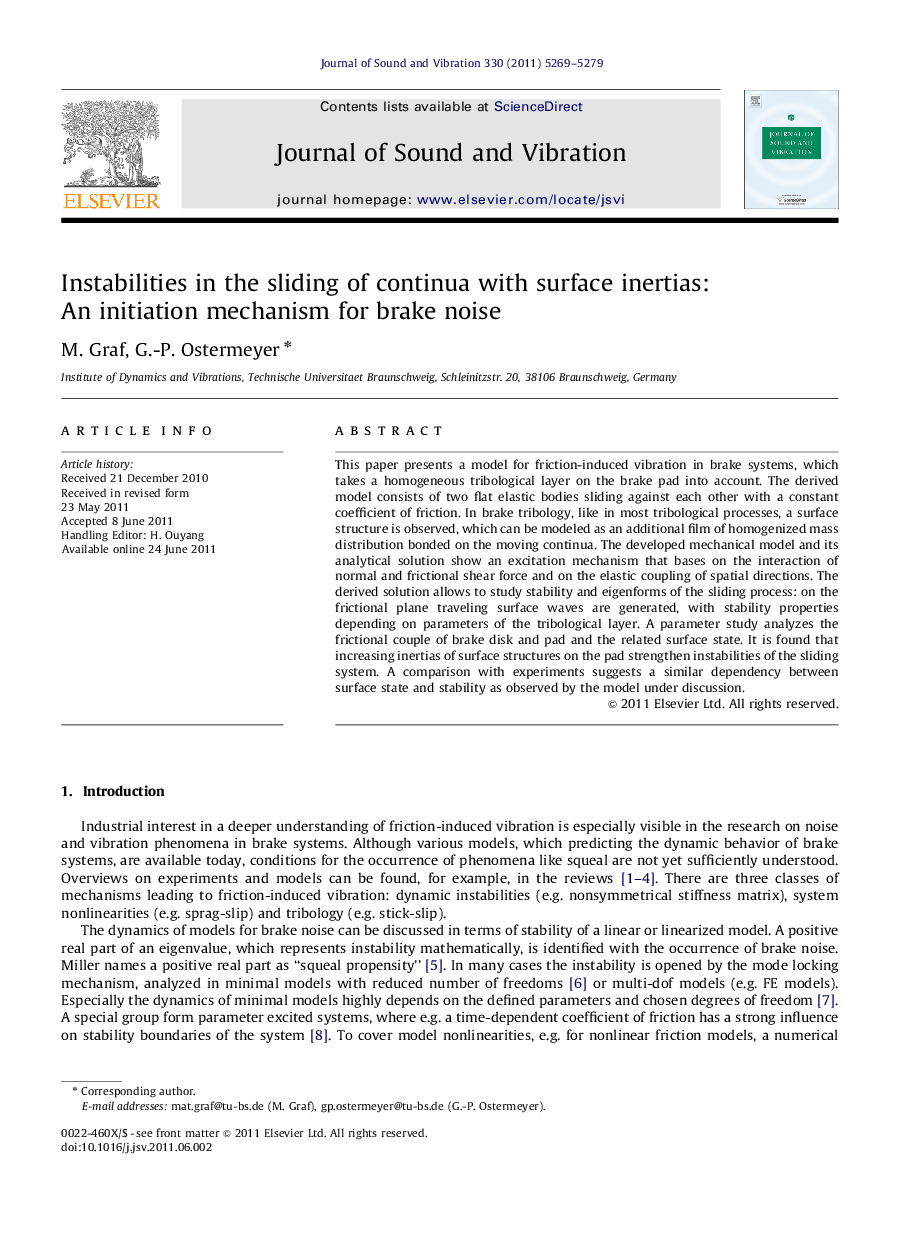| Article ID | Journal | Published Year | Pages | File Type |
|---|---|---|---|---|
| 288643 | Journal of Sound and Vibration | 2011 | 11 Pages |
This paper presents a model for friction-induced vibration in brake systems, which takes a homogeneous tribological layer on the brake pad into account. The derived model consists of two flat elastic bodies sliding against each other with a constant coefficient of friction. In brake tribology, like in most tribological processes, a surface structure is observed, which can be modeled as an additional film of homogenized mass distribution bonded on the moving continua. The developed mechanical model and its analytical solution show an excitation mechanism that bases on the interaction of normal and frictional shear force and on the elastic coupling of spatial directions. The derived solution allows to study stability and eigenforms of the sliding process: on the frictional plane traveling surface waves are generated, with stability properties depending on parameters of the tribological layer. A parameter study analyzes the frictional couple of brake disk and pad and the related surface state. It is found that increasing inertias of surface structures on the pad strengthen instabilities of the sliding system. A comparison with experiments suggests a similar dependency between surface state and stability as observed by the model under discussion.
► We develop a continuous model of two sliding half-planes with friction. ► The mass of a thin tribological layer is taken into account between both bodies. ► Parameters for the frictional couple of brake pad and brake disk material are applied. ► A linear stability shows that the tribological layer has a strong impact on sliding stability. ► Measurements show the same influence of the tribological layer on siding stability as the model does.
